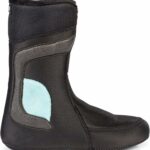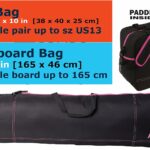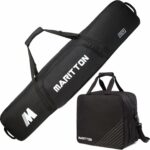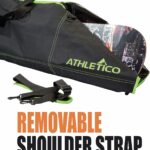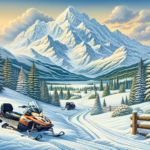If you’re a winter adventure lover or an avid DIY enthusiast looking for a fun project, then learning how to make PVC snowshoes might be your next exciting endeavor. This article will guide you through the process of creating your handmade PVC snowshoes, helping you brace the winter trails with a custom piece of gear. Whether you’re navigating through a snowy landscape or just want the satisfaction of a DIY creation, this guide will provide you with all the necessary steps and tips to get your snowshoes up and running. It’s simpler than you think, and a rewarding project that will benefit you throughout the colder seasons. So grab your gear, and let’s get started!
Understanding the Basics of PVC Snowshoes
PVC snowshoes are becoming increasingly popular due to their affordability, durability, and overall performance in snowy conditions. They are easy to make at home using simple tools and materials. Before we delve into the nitty-gritty of constructing these, it is essential to understand what they are and their advantages.
Definition of PVC Snowshoes
A PVC snowshoe is a type of footwear designed for walking over snow. It’s made from Polyvinyl Chloride (PVC), a type of plastic known for its strength, resistance to moisture and chemicals, and affordability. The design is straightforward and includes a rounded frame with webbing across the inside. The concept is based on pressure distribution, the snowshoe spreads your weight over a larger area reducing the sinking effect.
Benefits of Using PVC Snowshoes
One of the major benefits of using PVC snowshoes is that they prevent you from sinking deep into the snow while walking. This can be tremendously helpful when traveling through snowy or icy terrain. Their lightweight nature also makes them comfortable for extended use. Furthermore, they are durable and can withstand harsh weather conditions without any significant wear or damage.
Comparison with Other Types of Snowshoes
Compared to other types of snowshoes, such as those made from metal or natural materials, PVC snowshoes are lightweight and cheaper. They can also be adjusted to match the user’s shoe size, thus offering a more flexible option. That being said, other types may offer enhanced traction or performance in specific scenarios, so the choice can come down to preference and usage needs.
Materials Required
Creating PVC snowshoes requires a few materials, most of which you likely already have around your home.
Listing of Necessary Items
Primarily, you will require PVC pipes, some duct tape, a heat gun, saw, fasteners like bolts or screws, webbing material, and a binding element. You also might need crampons, or alternatives, to add traction to the snowshoe.
Selection Criteria for PVC Pipes
The thickness and diameter of the PVC pipes you choose will largely depend on your body weight and the expected snow conditions. Traditionally, 1 inch diameter PVC pipes are optimal for most adults. They provide the right balance between strength and flexibility.
Suitable Types of Fasteners
When it comes to fasteners, bolts, screws, or heavy-duty zip ties can work. They must be strong enough to securely hold the shape of the snowshoe and withstand the rigors of use.
Choice of Webbing Material
The webbing is crucial as it supports your foot and distributes your weight evenly across the snowshoe. Nylon or polyester strapping is a great option as they’re not only strong but also resistant to water and cold temperatures.
Designing Your PVC Snowshoes
Once you have all your materials ready, it’s time to get creative and design your snowshoes.
Understanding Size and Shape Factors
The size and shape of your PVC snowshoes depend on your weight, shoe size, and the type of snow you might be walking on. Typically, you will form a teardrop shape that’s wider at the front and tapers off at the back.
Overview of the General Design Process
The general design process involves sketching out the desired shape of the snowshoe on a hard surface, then overlaying the PVC pipe on top of the sketch. This gives you a blueprint for when you bend the pipe into shape.
Customization Ideas for Your Design
Though functionality is the key factor in the design, that doesn’t mean you can’t add personal touches. Painting the frame, using colored webbing, or even adding a personalized emblem are all viable ideas for customization.
Cutting the PVC Pipes
Getting the PVC pipes into the appropriate lengths is the next step.
Safety Precautions When Cutting PVC Pipes
Always remember to wear safety goggles and gloves when using a saw to cut the PVC pipes. Also, make sure to work on a stable surface and secure the pipe accordingly to prevent it from moving during the cutting process.
Desired Lengths for Each Part
The tube’s length for the frame will depend on your shoe size, while the crossbars’ length will depend on the width of the frame. Generally, the frame tube is about 5-6 feet long, while the crossbars are around 10-12 inches.
Method of Cutting PVC Pipes
You can use a handsaw or a power saw to cut the PVC pipes into lengths. Ensure that your cuts are straight and smooth as jagged edges can weaken the structure of your snowshoes.
Forming the Frame of the Snowshoes
After cutting the PVC pipes, you will form the frame of the snowshoes by bending the pipes into the desired shape.
Bending the PVC Pipes into Desired Shape
A heat gun is used to soften the pipe so that you can bend it into shape. It’s important to apply the heat evenly to prevent the pipe from becoming too weak in certain sections.
Fastening Pipe Ends Together
After bending them into the correct shape, the ends of the PVC pipe are fastened together using screws, bolts, or zip ties. It’s important to make this joint very secure, as it holds the shape of the snowshoes.
Adding Crossbars for Structural Support
Crossbars are added for structural support and to provide a platform for the foot. They are attached using screws or ties and can be adjusted for a better fit.
Applying the Webbing
With the frame all set up, the next step is to apply the webbing.
Choosing the Right Webbing Pattern
The webbing pattern is crucial for evenly distributing your weight on the snowshoe. A popular pattern is the ‘H’ or ladder-like design that provides a good balance of strength and flexibility.
Securely Attaching the Webbing
The webbing is woven through the frame and pulled taut. It is then securely fastened using ties, bolts, or screws. It’s important to ensure that the webbing is tight and even to distribute weight efficiently.
Tips for Tied Tight and Evenly Spaced Webs
Start attaching the webbing in the middle and work your way outwards. This ensures equal tension across the snowshoe. Also, ensure that the webbing is neatly arranged, with the same amount of space between each pass.
Creating the Binding
The binding is what holds your foot to the snowshoe.
Designing the Binding
The binding design should allow for an adjustable fit and have straps across the top of your foot and around your heel. You can play around with different designs and materials, but keep comfort and adjustability in mind.
Attachment of Binding to the Frame
The binding can be attached directly to the crossbars or through an intermediary layer for added comfort. Make sure the binding is secure and positioned accurately for optimal balance.
Ensuring Adjustability and Secure Fit
To ensure adjustability, you can use straps or quick release buckles. This allows for different shoe sizes and types, making your snowshoes versatile for various users or conditions.
Adding Traction
Traction is essential when walking on snow or ice to prevent slipping.
Importance of Traction for Snowshoes
Traction devices enable you to walk up and down slopes and on icy surfaces without risk of slipping or sliding. They dig into the snow and provide stable footing.
Attaching Crampons or Cleats
Crampons or cleats can be attached to the bottom of the snowshoes. They should be located beneath the ball of your foot, as that’s where we exert the most pressure when walking.
Homemade Alternatives to Commercially Available Traction Devices
A homemade alternative to a traction device can be as simple as drilling screws into the bottom of the snowshoes. This can be surprisingly efficient, provided the screws are long enough to penetrate the snow.
Finalizing the Snowshoes
After attaching the traction devices, the snowshoes should be thoroughly checked before use.
Inspecting for Uneven Areas or Weak Points
Inspect the snowshoes for any uneven areas in the webbing or weak points in the frame. Any tears or wear in the webbing should be fixed immediately to prevent further damage.
Making Necessary Adjustments
Try the snowshoes on and walk around to see how they feel. You might need to adjust the bindings or webbing, or even reposition the traction devices.
Suggestions for Decorative Elements
The final touches are purely up to your taste, and can include painting the snowshoe in colors, adding a brand emblem, or using colored straps.
Maintenance and Use of Your PVC Snowshoes
Proper usage and regular maintenance can prolong the lifespan of your homemade snowshoes.
Proper Use of Your Homemade Snowshoes
Most importantly, remember to tread lightly, especially on the delicate tundra ecosystem. Always watch your step and avoid areas with less snow as the impact of your snowshoe may damage the terrain underneath.
Regular Maintenance and Care Tips
Clean your snowshoes after every use. Check them regularly for any damage and fix minor issues immediately to prevent larger problems from arising. Store them in a dry place to prevent any moisture damage.
Handling Common Wear and Tear Issues
With frequent use, the webbing and bindings may wear out faster than the frame. With some spare webbing or straps, these parts can be easily replaced.
Creating your own PVC snowshoes might seem like a daunting task, but with the right tools, materials, and a bit of patience, you can potentially make a highly effective pair of snowshoes that provide great performance at a fraction of the cost. Happy trekking!
- What Snowboard Bindings Should I Get? - January 23, 2024
- What Size Screws For Snowboard Bindings? - January 23, 2024
- How To Snowmobile On Water? - January 23, 2024



